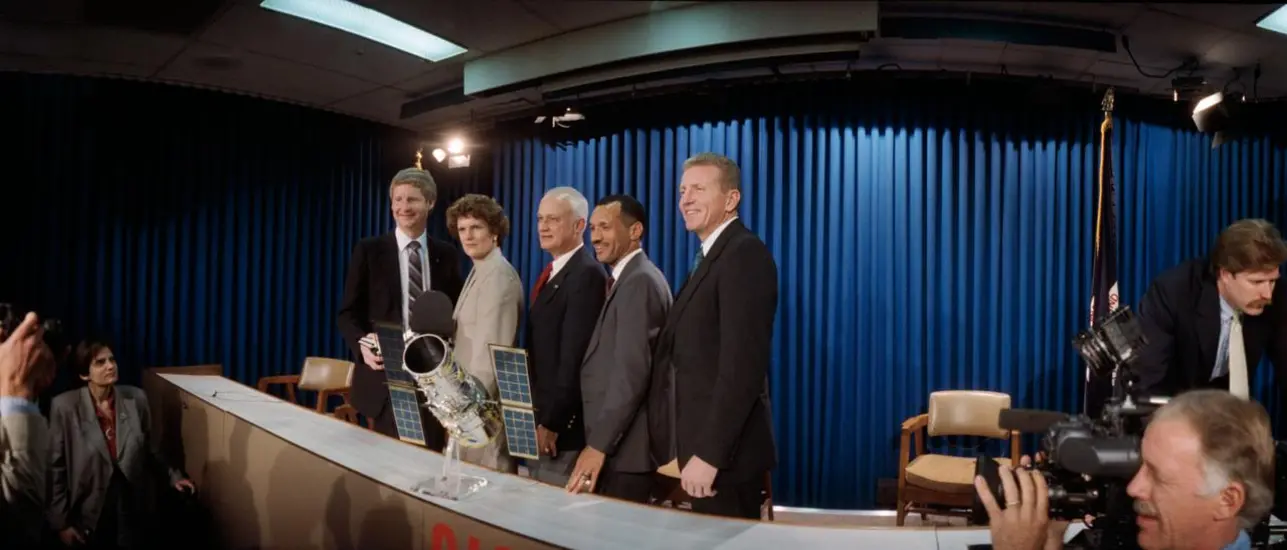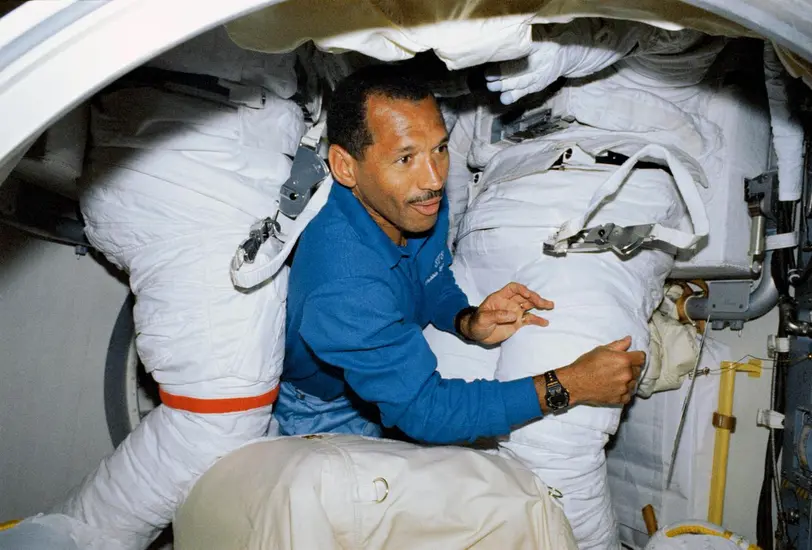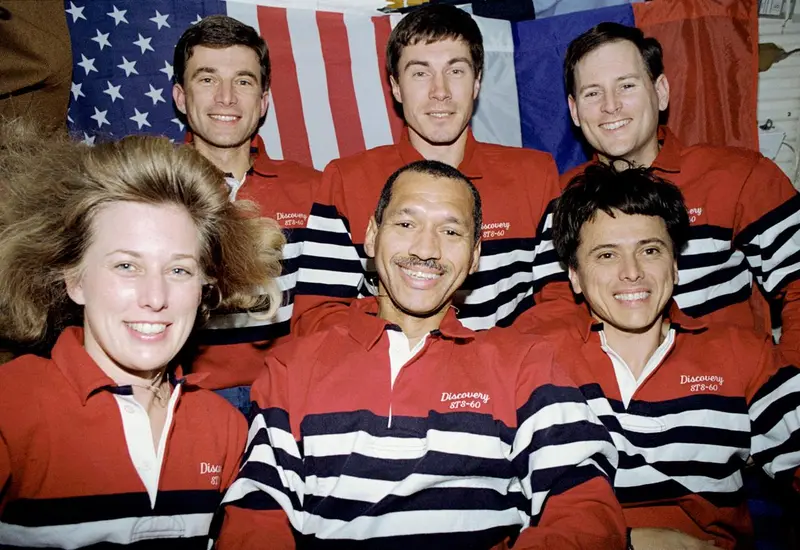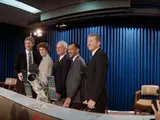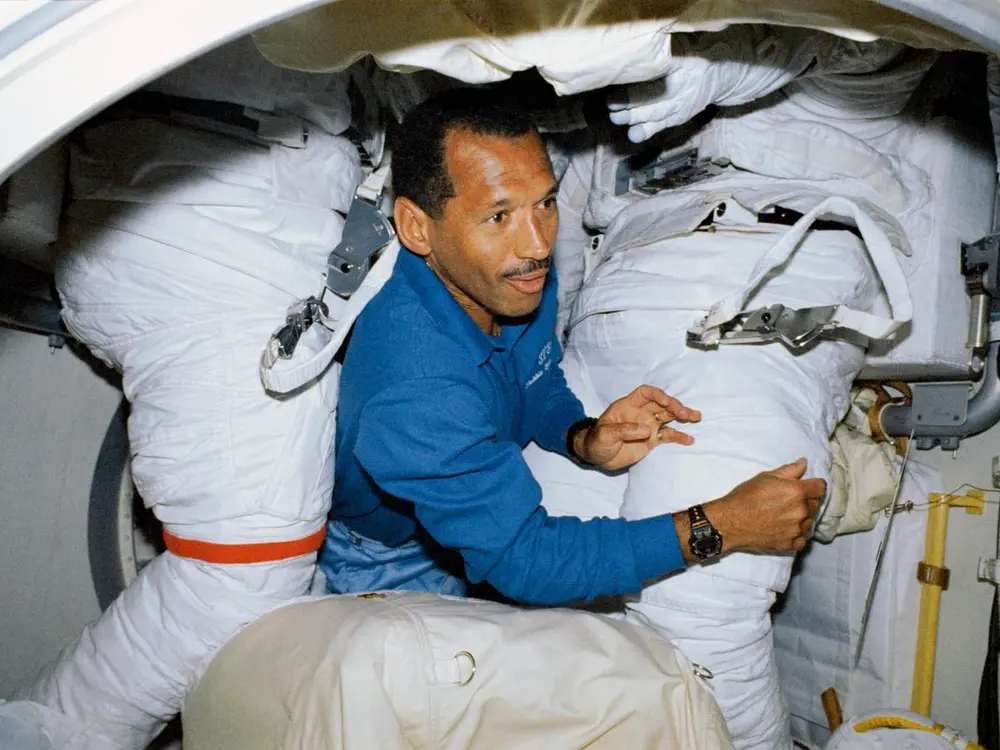
Charles Bolden: Pilot, Astronaut, and NASA Administrator
Feb 16, 2023
Maj. Gen. Charles Bolden, the first African American NASA Administrator, was born in 1946 in Columbia, South Carolina. Growing up in South Carolina, Bolden and his family faced racial discrimination in the segregated United States. He was thankful for his supportive parents, recalling that “they did everything for us and so we had a great time growing up.” He was driven even as a child, deciding he wanted to go to the U.S. Naval Academy in the 7th grade.
The support and closeness with his family led him to want to serve in the military, like his father and uncles before him, who were World War II veterans. In a 2012 lecture, Bolden reflected, “They served with distinction, but not always recognition, because of their race.” Bolden himself was initially refused a nomination for the U.S. Naval Academy by South Carolina’s state representatives. He then wrote a letter to President Lyndon Johnson asking for admittance—a letter which resulted in a nomination from a congressman in Chicago.
Although President Truman had outlawed segregation in the armed forces in 1948, Bolden still faced racial discrimination. Out of 4,000 midshipmen in his incoming class, he was one of only twelve Black men, and the only Black person in his company. Later, when Bolden moved into leadership roles, he made a point to provide support to other Black service members who were undergoing training with the Navy to ensure they didn’t face the same discriminatory hardships he had experienced.
Bolden graduated from the Naval Academy in 1968 and went on to fly more than 100 combat missions in an A-6A Intruder during the Vietnam War as a member of the Marine Corps. He had fallen in love with flying and continued his career in 1978 as a test pilot at the Naval Test Pilot School at Patuxent River Naval Air Station. However, everything was about to change for Bolden—the sky would no longer be the limit.
“I talked to my wife and said, ‘you know, I’m gonna apply for the Space Program,’” Bolden remembered, “’I’ll never get picked but at least I’ll have the satisfaction of knowing I tried.’” Despite his demeanor, Bolden was selected as part of the 1980 class of NASA astronauts.
During his time as an astronaut, Bolden flew four missions and logged over 680 hours in space. Flying his first mission in 1986, he later piloted the Space Shuttle Discovery (STS-31) in 1990, the mission that deployed the Hubble Space Telescope. He also served as commander on STS-45 aboard the Space Shuttle Atlantis. In 1994, he served as commander of Discovery’s STS-60 mission. This flight was the first of the Shuttle-Mir Program, which was a joint U.S.-Russian space program. After the Challenger tragedy, he also served as Chief of NASA’s Safety Division at the Johnson Space Center.
Bolden completed his service as an astronaut in 1994. He returned to active duty with the Marine Corps, first serving as the Assistant Commander of Midshipmen at the Naval Academy and then as Commanding General of the Marine expeditionary force attached to Operation Desert Thunder in Kuwait in 1998. In 2003, he retired from the Marine Corps with the rank of Major General. At the time, he was Commanding General of the 3rd Marine Aircraft Wing Marine Corps Air Station in Miramar, California.
Despite having completed his service as an astronaut and retiring from the military after a long and successful career, Charles Bolden wasn’t done. In 2009, he made history when President Barack Obama nominated him as the 12th NASA Administrator—the first African American to be selected for the position and only the second astronaut to hold it.
Bolden oversaw a period of transition at NASA with the completion of the Space Shuttle program in 2011 and shift to commercial cargo resupply of the International Space Station. He also oversaw NASA’s journey back towards the Moon and Mars with the development of the Space Launch System and the Orion spacecraft. Other notable achievements from Bolden’s time as Administrator include the Mars Curiosity Rover landing, the successful Juno mission to Jupiter, and focusing NASA’s aeronautics divisions on developing faster and quieter aircraft while also more climate friendly than ever before.
Bolden resigned from his position as NASA’s Administrator in 2017 and now works in the private sector. Over his long and distinguished career, Bolden has received a number of awards, including induction into the U.S. Astronaut Hall of Fame in 2006 and the National Aviation Hall of Fame in 2016. The National Museum of African American History and Culture holds several items from Bolden in its collection, including his flight jacket. In 2019, the Air and Space Museum awarded him the National Air and Space Museum Trophy for Lifetime Achievement. Upon receiving the award, he reflected, “I am an ordinary guy who had an opportunity to do extraordinary things.”
Want to learn more about Charles Bolden? Listen to him reflect on his career in this video he made with the Museum when he was the 2019 recipient of the Air and Space Museum Trophy for Lifetime Achievement:
Related Topics

We rely on the generous support of donors, sponsors, members, and other benefactors to share the history and impact of aviation and spaceflight, educate the public, and inspire future generations. With your help, we can continue to preserve and safeguard the world’s most comprehensive collection of artifacts representing the great achievements of flight and space exploration.
Support the Museum
We rely on the generous support of donors, sponsors, members, and other benefactors to share the history and impact of aviation and spaceflight, educate the public, and inspire future generations. With your help, we can continue to preserve and safeguard the world’s most comprehensive collection of artifacts representing the great achievements of flight and space exploration.



